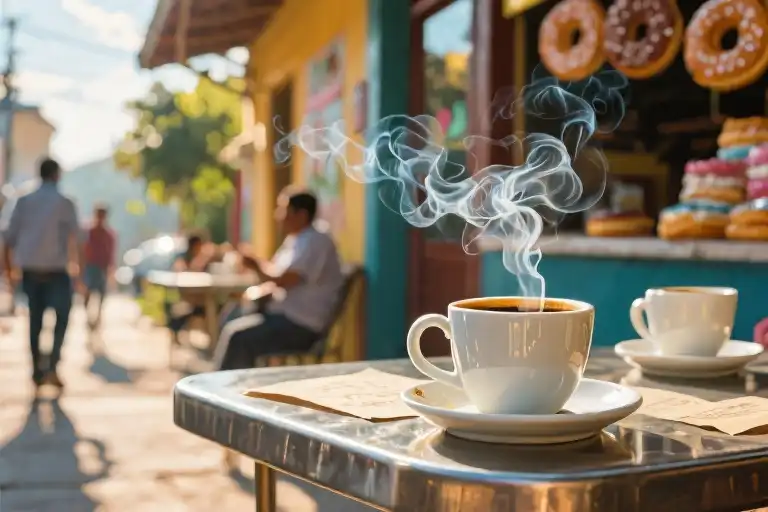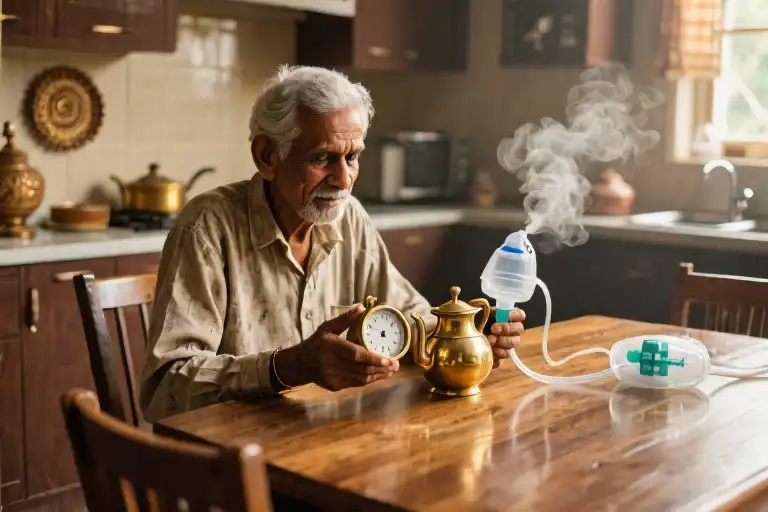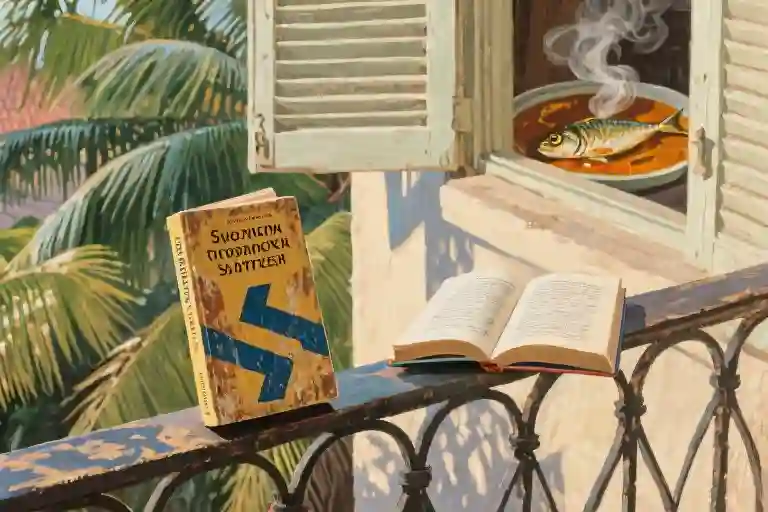The truck lurched violently as its tires hit another pothole, sending my small frame bouncing against the cracked vinyl seat. Through the open windows, thick tropical air rushed in – heavy with the scent of wet soil and something vegetal I couldn’t name. My fingers gripped the door handle as we climbed the muddy hill, the Isuzu’s engine growling in protest. Outside, bamboo clusters swayed like drunken giants in the midnight breeze, their leaves whispering secrets in a language I’d forgotten.
Six hours earlier, I’d been cocooned in the artificial chill of a Dubai airport lounge, surrounded by the sterile hum of air conditioning and the quiet tapping of business travelers on their laptops. The transition felt less like traveling between countries than teleporting between planets. That first night in Calubcub, the crickets screamed so loudly I thought they were inside my skull – a stark contrast to the muted beeps of luxury car locks in our underground parking back home.
‘I was the limping person walking without a stick.’ The phrase formed in my nine-year-old mind as I watched village children chase fireflies barefoot through the mud. Their laughter carried the easy cadence of those who belonged, while my stiff new sneakers stayed stubbornly clean. Everything about me felt wrong here – my pale skin that had never known unfiltered sunlight, my crisp English sentences that landed like math equations in casual conversations, even the way I hesitated before drinking from the metal cup Lola offered me.
The road itself seemed to mirror my disorientation. What passed for a highway here would barely qualify as an alleyway in Dubai – uneven, unpredictable, with sudden gaps where the concrete had surrendered to relentless tropical rains. Each jolt sent our dangling rosary swinging wildly, the plastic Jesus performing aerial acrobatics between my seat and my cousin’s. This broken path became my first metaphor for cultural shock – you can’t navigate what you don’t understand, and sometimes the map itself keeps changing.
Through the darkness, pinpricks of light appeared – not the clinical white of street lamps but the warm orange glow of kerosene lamps from nipa huts. The smells shifted too: diesel fumes giving way to wood smoke, the tangy sweetness of ripening mangoes, something pungent I’d later learn was fermenting fish sauce. My Middle Eastern upbringing had prepared me for the geometric precision of skyscrapers, not this organic chaos where houses seemed to grow from the earth like particularly ambitious mushrooms.
That first ride became the opening scene of my dual identity – the moment I realized home wasn’t a place you returned to, but something you had to rebuild with unfamiliar materials. The truck’s headlights illuminated just enough of the road to show how much I couldn’t see, how much I’d need to learn. Somewhere ahead in the darkness, balut vendors packed up their baskets, basketball hoops stood waiting for tomorrow’s game, and a thousand unwritten rules about how to be ‘properly Filipino’ lurked in the shadows. The road’s broken jaw would teach me to chew differently.
The Culture Wars on My Taste Buds
The first cultural grenade exploded in my mouth at 9:37 PM on a humid Tuesday night. My grandmother’s calloused hands pressed a warm, oval-shaped object into my palms – my first encounter with balut. The steam rising from the egg carried the faint scent of feathers and saltwater, nothing like the sanitized aromas of shawarma stands in Dubai. “Eat, utoy,” Lola urged, her eyes crinkling with amusement at my hesitation. I cracked the shell under her watchful gaze, revealing the dark broth that smelled like the chicken soup my mother made during Dubai winters – except this came with anatomical diagrams.
When Food Fights Back
Eating balut became my personal Olympics of cultural adaptation. I developed a three-step survival technique: 1) Crack at night (daylight reveals too much), 2) Chug the broth first (like swallowing medicine), 3) Chew the yolk-and-embryo mixture exactly seven times before gulping. The texture reminded me of playing with kinetic sand – simultaneously firm and yielding. My cousins laughed as I chased each bite with gulps of Coke, their teeth flashing white against the kerosene lamp’s glow. “In Dubai we have camel milk,” I protested weakly, earning more laughter. The village elders nodded approvingly – this pale city boy was trying.
The Great Suman Conspiracy
The rice cakes arrived wrapped like presents in banana leaves, their sticky surfaces glistening under the kitchen bulb. “They’re not sweet enough,” Auntie Rosa declared, pushing a bowl of granulated sugar toward me. This baffled my Middle Eastern palate accustomed to baklava so sugary it made your teeth vibrate. I learned Filipino desserts whisper their sweetness through coconut milk and ripe mangoes rather than shouting it through syrup. The metallic drinking cup added another sensory surprise – the chill of the water carrying a faint iron tang that no crystal glass in Dubai ever did.
Dining Across Dimensions
Mealtimes became time-travel portals. One bite of suman transported me to Ramadan nights in Deira where dates melted like caramel. The next mouthful of sinigang anchored me firmly in Batangas, the tamarind broth’s sourness puckering my lips. I began noticing how food arranged itself differently here – communal platters replacing individual plates, bare fingers sometimes substituting for silverware. The Dubai mall food courts with their compartmentalized meals now felt sterile compared to this living culinary theater.
The VIP Treatment Paradox
My “abroad kid” status earned me culinary pardons. When I gagged on my first bite of bagoong, uncles quickly passed me plain rice instead of teasing like they would others. This special treatment created strange guilt – I wanted to belong, but my taste buds kept betraying me as an outsider. The solution emerged during a fiesta when I discovered turon. That first crunch of caramelized lumpia wrapper, the molten banana inside – finally, a Filipino flavor that didn’t require cultural translation. For the first time, I reached for seconds without being coaxed.
The Evolution of My Palate
Three typhoon seasons later, I could distinguish provincial suman from Manila versions by texture alone. The village balut vendor knew to save me eggs with more developed ducklings – “For the brave boy,” she’d wink. That metallic cup became my preferred way to drink buko juice, appreciating how the metal conducted the coconut water’s chill. My taste buds had drawn their own cultural map, with flavors no longer categorized as “Filipino” or “Arab” but simply “mine.” The food wars ended not with surrender, but with the delicious realization that belonging tastes different on every tongue.
The Language Maze and Social Minefields
The first time my grandmother called me “utoy,” I froze mid-step. That single word—a casual term for young boys in our province—felt like a secret code I’d failed to decrypt. In Dubai, I’d been the fluent English speaker who occasionally peppered conversations with textbook Tagalog. Here, my carefully constructed Taglish—that smooth blend of Tagalog and English that served me well in international schools—made me sound like a pretentious alien.
When Your Own Language Betrays You
I remember sitting at a plastic-covered table during my first fiesta, surrounded by relatives who spoke in rapid-fire Batangas Tagalog. Their sentences danced with unfamiliar particles like “ga” and “no”—linguistic seasoning that transformed the language I thought I knew into something wild and musical. When I attempted to join the conversation, my overly proper diction drew amused glances. “Ang sosyal naman ng Tagalog mo,” my cousin teased—your Tagalog sounds so fancy. It wasn’t a compliment.
This linguistic limbo created bizarre social dynamics. Adults praised my “intelligent” accent (a backhanded compliment rooted in colonial mentality), while cousins my age hesitated before speaking to me, as if I might correct their grammar. The irony? I envied their effortless banter, their ability to shift between formal and slang registers depending on whether they were talking to elders or peers. My language skills, carefully cultivated in Dubai’s Filipino expat bubble, suddenly felt stiff and unnatural.
Fiesta Failures and VIP Isolation
Nothing exposes cultural clumsiness like a Philippine fiesta. The week-long celebration in our barangay should have been my golden ticket to belonging—instead, it highlighted every way I didn’t fit. While neighbors moved easily between food stalls and impromptu karaoke sessions, I struggled with basic interactions:
- Laughing a beat too late at jokes because I missed the local references
- Misreading social cues (apparently declining second helpings requires Oscar-worthy acting)
- Panicking when elderly relatives asked about my Dubai life in dialects I barely understood
The cruelest twist? My “abroad kid” status granted me VIP treatment—special seating, heaping plates of food, constant attention—that only deepened my isolation. Being treated like visiting royalty sounds glamorous until you realize it means no one lets you join the messy, joyful chaos of real participation.
The Code-Switching Breakthrough
My turning point came when I stopped trying to “fix” my Tagalog and started embracing code-switching as a superpower. I discovered that:
- Linguistic flexibility beats perfection – Mixing English and Tagalog stopped being a liability when I learned to do it with confidence rather than apology
- Humor bridges gaps – Making fun of my own awkwardness (“Sorry, my Tagalog sounds like a Google translate!” ) disarmed critics
- Listening matters more than speaking – Paying attention to how locals structured sentences helped me absorb the rhythm of natural conversation
Slowly, the same relatives who once teased my “sosyal” Tagalog began including me in their rapid-fire exchanges. The fiestas that once terrified me became highlights where I could finally relax into the beautiful chaos of Filipino social bonding—loud jokes, overlapping conversations, and all.
What began as a series of humiliating language stumbles taught me an unexpected truth: belonging isn’t about speaking flawlessly, but about communicating authentically. My hybrid Taglish, once a mark of outsider status, eventually became my linguistic fingerprint—proof that I could honor both my Dubai upbringing and my Philippine roots without compromising either.
The Cybercafe Warriors and Basketball Believers
The fluorescent lights flickered above rows of mismatched computer monitors, their blue glow illuminating the sweat-slicked faces of teenage boys. This was our coliseum – a cramped internet cafe where battles were fought not with swords, but with keyboards and mouse clicks. The air smelled of fried chicken grease, teenage body odor, and the metallic tang of cheap headphones. Outside, the tropical heat pressed against the glass doors like an impatient spectator.
The Language of Digital Warfare
Every afternoon at 3:15 PM, the transformation began. School uniforms were shed like chrysalises as boys morphed into warriors of Defense of the Ancients (Dota). The moment headsets clicked into place, a symphony of profanity erupted – ‘Putangina mo!’ echoing like a battle cry across the linoleum floors. We weren’t just playing a game; we were participating in a cultural rite of passage that united Filipino youth across social classes.
I remember my first tournament – fingers trembling over the keyboard as twelve-year-olds called me ‘bobo’ (stupid) for misclicking. The trash talk wasn’t personal; it was our love language. In Dubai’s air-conditioned malls, I’d never experienced this raw, unfiltered camaraderie. Here, middle fingers raised in triumph weren’t rude gestures but badges of honor. The same boys who called each other ‘animal’ during matches would later share bags of fishballs from the street vendor outside.
The Rhythm of the Streets
When our wrists grew tired from clicking, we migrated to the concrete basketball courts where another kind of magic happened. Local ‘Ligas’ weren’t just sports events – they were week-long festivals of community spirit. Makeshift bleachers filled with grandmothers cheering as loudly as teenage girls, the scent of barbecue mixing with the sound of squeaking rubber shoes. The championship games always ended with something distinctly Filipino – a beauty pageant where basketball stars suddenly became awkward contestants in formal wear.
I’ll never forget the surreal sight of our point guard – still sweaty from his game-winning shot – being crowned ‘Mr. Basketball’ while wearing a rented suit two sizes too big. The crowd roared as he awkwardly waved in his dress shoes, proving that in Philippine provincial culture, masculinity could embrace both athleticism and pageantry without contradiction.
Between Two Worlds of Play
The contrast with my Dubai childhood couldn’t have been sharper. Where Middle Eastern malls offered sanitized play zones with padded edges, our Philippine streets provided raw, improvisational playgrounds. A broken hoop nailed to a mango tree became our NBA arena. A sidewalk crack served as the foul line. The very roughness that initially shocked me became the source of its beauty – this was play unmediated by adult supervision or safety regulations.
In those cybercafes and dirt courts, I discovered an unexpected truth: what appeared chaotic to my ‘Young Sheldon’ eyes was actually a sophisticated social ecosystem. The same boys who seemed like delinquents during Dota marathons would help carry groceries for elderly neighbors. The basketball trash-talkers became math tutors for younger kids. This wasn’t the individualism I knew from Dubai’s gated communities, but something richer – a web of relationships where competition and care coexisted.
The Vanishing Arcades
Today, those packed computer shops have largely disappeared, replaced by mobile gamers hunched over smartphones. The communal magic of shared screens and collective groans over lagging internet has faded. Yet the basketball courts remain, still hosting their chaotic Ligas and unlikely beauty queens. In retrospect, those sweaty afternoons taught me more about Filipino culture than any textbook could – about how play becomes community, how competition breeds connection, and how even in digital worlds, we never truly escape our hunger for real human noise.
Shadows of Dubai, Light of the Philippines
The air in our Calubcub backyard carried the sticky sweetness of overripe mangoes mixed with the acrid smoke from the neighbor’s barbecue. I sat on a plastic monobloc chair that had molded perfectly to my spine after three hours of watching uncles argue about basketball while shirtless men took turns belting out off-key karaoke renditions. This scene – chaotic, sweaty, and vibrantly alive – felt galaxies away from the climate-controlled order of our Dubai apartment where Filipino gatherings meant whispered conversations behind closed doors and carefully measured laughter.
When Walls Became Bridges
In the Emirates, our community existed in the spaces between things – between work shifts, between visa renewals, between the unspoken rules of conservative host culture. Socializing happened in apartment living rooms with curtains drawn, the scent of adobo competing with air fresheners meant to mask any evidence of actual living. We measured our voices, our clothing choices, even how enthusiastically we could greet each other. The walls felt like they existed not just to define spaces, but to contain our cultural identity within acceptable limits.
Philippine fiestas tore down those invisible barriers with the subtlety of a carabao charging through rice paper screens. Suddenly, music wasn’t background noise but a physical presence that vibrated through your chest from speakers mounted on bamboo poles. Laughter wasn’t measured in decibels but in how many dogs started howling in response. The concept of personal space evaporated as aunts pinched my cheeks and uncles dragged me into impromptu dancing, their hands calloused from farm work but surprisingly gentle when teaching the steps.
The Symphony of the Ordinary
What startled me most wasn’t the dramatic differences, but how beauty hid in mundane details I’d never noticed elsewhere. In Dubai, I’d taken pride in identifying every luxury car model that passed our compound; here I learned to distinguish bird calls at dawn – the metallic ‘tink-tink’ of maya birds versus the watery trill of the tailorbird. Our air-conditioned Dubai nights had been soundtracked by the hum of compressors; now I fell asleep to the layered orchestra of crickets, rustling banana leaves, and the occasional yowl of mating cats that made my grandmother mutter prayers against evil spirits.
Even the light behaved differently. The Emirates’ sunlight came filtered through skyscrapers and tinted windows – clinical, contained, predictable. Philippine sunlight danced through coconut fronds, painting liquid gold patterns on red clay that changed by the minute. I began noticing how golden hour gilded the sweat on basketball players’ backs during liga games, transforming sweaty teenagers into temporary gods of the makeshift court.
The Currency of Connection
Back in Dubai, social transactions followed clear rules – you arrived exactly on time, brought appropriately packaged gifts, and left before the host started checking their watch. Here in the province, time moved like the river behind our house – sometimes sluggish, sometimes rushing unpredictably. Visitors came bearing not store-bought presents but baskets of freshly picked santol or bunches of kangkong tied with banana fiber. They stayed for meals that stretched into merienda that bled into dinner, their departure determined not by clocks but by how many rounds of beer the men finished or when the last dramatic karaoke ballad faded into the night.
This relentless togetherness initially exhausted my middle-eastern sensibilities. Why couldn’t people just send a text instead of dropping by unannounced? Why did buying shampoo at the sari-sari store require a fifteen-minute conversation about my grandmother’s arthritis? But gradually, I noticed the safety net this created – how neighbors instinctively knew when someone’s rice supply ran low, how news traveled faster than WhatsApp, how no crisis ever found you fighting alone.
Between Two Worlds
The contrasts revealed unexpected truths about both cultures. Dubai’s polished surfaces had taught me efficiency and self-reliance; the province showed me the strength found in vulnerability and interdependence. Where the Emirates valued privacy and restraint, Philippine culture celebrated the messy, noisy reality of human connection. I began appreciating how each place carved different facets of my identity – like sunlight and shadow shaping the same object into new forms throughout the day.
Some nights, lying under a mosquito net with the symphony of rural life humming outside, I’d mentally superimpose the two worlds. The scent of frangipani blossoms mixing with memory of Arabian oud. The rhythmic pounding of pestles making coconut milk merging with the echo of call to prayer from distant minarets. These weren’t opposing forces, but complementary colors in the spectrum of my experience – teaching me that home isn’t a single location, but the sum of all places that shape how you see the world.
Walking Between Two Worlds
The journey from cultural alienation to acceptance is rarely a straight path. For those of us who’ve grown up straddling different worlds, identity isn’t something you’re born with—it’s something you piece together through fractured experiences. That nine-year-old boy who recoiled at balut and stumbled through Tagalog conversations has grown into someone who carries both Dubai’s polished surfaces and Calubcub’s muddy roads within him.
The Mosaic of Belonging
Cultural adaptation works in unexpected ways. What initially felt like weaknesses—the inability to stomach street food, the awkwardness when cousins laughed at my ‘posh’ Taglish—became points of connection. Those early struggles now serve as bridges when I meet other overseas Filipino kids wrestling with similar questions. The very things that made me feel like an outsider became tools for understanding.
There’s a particular magic in realizing that your perceived flaws are actually superpowers. My “too proper” English became an asset in university debates. The self-consciousness from being the “Young Sheldon” of the province trained me to observe social nuances others miss. Even the visceral memory of that first balut—eaten under cover of darkness to avoid seeing the embryo—transformed into a funny story that breaks the ice with fellow immigrants.
When Fractures Become Bridges
The metaphor of brokenness follows many third culture kids. We talk about feeling fragmented, about the cracks between our multiple selves. But with time, I’ve learned that fractures aren’t just wounds—they’re openings where light gets in, where connections form. That moment in the cybercafe when I finally shouted “Putangina mo!” with genuine feeling wasn’t losing myself; it was discovering another facet of who I could be.
Globalization often gets discussed in abstract terms, but for immigrants, it’s deeply personal. My childhood map had two magnetic poles: the air-conditioned formalism of Dubai’s Filipino community and the sweaty, laughing chaos of provincial fiestas. Neither was ‘better’—they simply demanded different survival skills. Learning to code-switch between them became my secret weapon.
The Gift of Dual Vision
Now, when I watch new batches of balikbayan kids struggling with their reverse culture shock, I recognize something precious in their discomfort. That tension means they’re developing what anthropologists call “dual perception”—the ability to see their heritage culture and adopted culture simultaneously. It’s exhausting but invaluable, like being bilingual for life itself.
The Middle East taught me discipline and precision; the Philippines taught me resilience and joy. Neither lesson could have been learned in isolation. Those years of feeling like a misfit—too Arabized for Filipino parties, too Filipino for Arab social norms—forced me to develop something rarer than perfect belonging: the ability to move fluidly between worlds.
Home as an Active Verb
“Where are you from?” used to tie my tongue in knots. Now I understand that home isn’t a checkbox but an ongoing conversation. Some days it’s the scent of cardamom in Arabic coffee; others it’s the sticky sweetness of turon from a street vendor. The answer changes depending on which part of my story needs telling.
To fellow cultural straddlers still in their limping phase: your fractures aren’t failures. They’re the seams where gold enters—the kintsugi of identity. What feels like breaking is actually the work of becoming. My journey from “the limping person without a stick” to someone who walks confidently between worlds taught me this: our mixed heritage isn’t a compromise, but a compounding of riches.
My fractures became my bridges.





